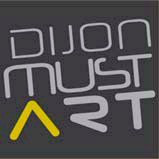Less vicariously, we invite you to hit the road, Jack (or Jill), and head east for our fun and festive wine and chocolate pairing event, held in conjunction with our next-door-neighbor, Macari Vineyards, and Chokola’j. Learn about Sex, Wine & Chocolate when Tracy will jointly present with relationship coach and sex educator, Marcia Baczynski and Susan Kennedy, co-founder of Chokola’j. Join us April 24, 2010 (this is a date change from what was previously announced) from 3:00-5:00 PM; $45.00/person. Kindly RSVP to Kimberly Grimmer at Macari via e-mail or phone (631-298-0100).
If a trip out east is too far to go, you can catch Tracy in her NYU class, Italian Wines–From North to South, on five consecutive Tuesdays from 6:45-8:45 PM, beginning May 18. Register through NYU now.
We are also thrilled to announce the launch of Tracy’s new website: It’s a Winederful Life, where she will endeavor to share her tales of “living la vida vino.”
Drink wisely and well,
Tracy Ellen Kamens, Ed.D., DWS, CWE
CEO: Chief Education Officer
and
Jared Michael Skolnick
COO: Cork Opening Officer
————————————
WHERE THE STREETS HAVE NO NAME
Given that wine regions don’t start out as full-blown wine regions, the touristy wine trails that eventually spring up frequently don’t have idyllic, wine-themed names for the roads and routes that bring visitors from tasting room to tasting room. Rather, the main drag that winds its way past winery after winery is more often like the U2 song – a place “where the streets have no name,” bearing instead the number of the local highway or route.
While you might have been advised to ‘get your kicks on Route 66,’ those visiting the Napa Valley will be best off if they stick to the parallel wine trails along Route 29 and the Silverado Trail. The former is considered to be the more bustling and trafficked than the latter, but both are home to wonderful wineries lining the roads from Carneros to Calistoga. The highway of Route 29 has lent its “no name” to Vineyard 29, which released its first vintage in 1992. In 2000, Vineyard 29 was acquired by Chuck and Anne McMinn, who subsequently expanded the single vineyard into a full-scale winery, known primarily for its Cabernet Sauvignons.
Across the country on the North Fork of Long Island, the two parallel roads are Route 25 (aka Main Road) and Route 48 (aka as both “the North Road” and Sound Avenue). Here, the climate is dramatically different – maritime vs. Mediterranean, but the wine trail has also served as inspiration for the eponymously named Vineyard 48. Originally Bidwell Vineyards, Vineyard 48 took on its new name in 2005 when the Sicilian-born, Rose Pipia purchased the property. Over the past 5 years, significant investments in the vineyard and winery have been made and today, the winery is known for its well-crafted wines.
Back in California, visitors to Paso Robles should travel along Route 46, which meanders past many of the wineries located in Paso Robles West, and then, after crossing Highway 101, takes you along the east side of the region. On the west side of town, the vineyards and winery of Tablas Creek Vineyard are located a little over 8 miles north of Route 46. Founded by the Perrin family of Château de Beaucastel in France’s Chateauneuf-du-Pape and wine importer, Robert Haas, Tablas Creek creates Rhone-style wines – both single varietal and blends – following organic viticultural practices.
Still further south, California’s Santa Barbara County is home to a diverse wine region spanning from the Santa Maria Valley to Santa Barbara proper. With its unique microclimate, wineries nestled in the Santa Rita Hills specialize in the Burgundian varieties of Pinot Noir and Chardonnay and are found along Highway 246. Here, vineyard manager and winemaker, Wes Hagen tends to the vines grown at Clos Pepe, adhering to sustaintable agricultural methods, including the use of a flock of sheep to assist with weeding.
TASTING NOTES
Although an appointment is required, it is well worth the effort to travel to this unique property. Wes will greet you himself, providing you with a personal tour of the vineyards, followed by a tasting in his parents’ beautiful home. On the nose, this wine has aromas of cherry, berry, dust and slight oak. Medium-bodied, with vibrant acidity, the wine shows flavors of strawberry, vanilla and a hint of oak, along with minerality in the long finish.
Road 31, Pinot Noir 2006, Napa Valley, CA, $38.00
Owner and winemaker Kent Fortner’s parents both grew up on family farms in rural Kansas, not far from Road 31, a route he has traversed in his 1966 Ford pick-up truck too many times to count. With cranberry, floral and herbal aromas, this medium-bodied wine is dry with medium acidity and bright fruit flavors of raspberry, cranberry and a hint of baking spice.
Tablas Creek Vineyard, Cote de Tablas Blanc 2008, Paso Robles, CA, $25.00
This blend of 42% Viognier, 26% Roussanne, 21% Marsanne and 11% Grenache Blanc is pressed and fermented in stainless steel to preserve the fresh fruit flavors of the wine. Floral and citrus aromas are joined on the palate by minerality, spice and tropical fruit flavors that persist throughout the wine’s long length.
Vineyard 29, CRU Cabernet Sauvignon 2007, Napa Valley, CA, $54.00
With grapes sourced from throughout the Napa Valley, the Cru Cabernet Sauvignon was aged in French oak for 18 months, 50% of which was new oak. Aromas of red and black fruits and floral notes greet the nose, while ripe blackberry, spice, smoke, oak enliven the palate, culminating in medium+ length.
Vineyard 29, Estate Cabernet Franc 2007, Napa Valley, CA, $140.00
The Cabernet Franc grapes for this wine hail from the original property, planted in 2000, and, while initially planted to be blended in with the Cabernet Sauvignon, were found to produce a wonderful wine all on their own. The 2007 saw 20 months in French oak, 90% of which was new, with 146 cases produced. Black fruit, oak and herbal aromas are found on both the nose and palate, along with a hint of spice and noticeable, but ripe, tannins.

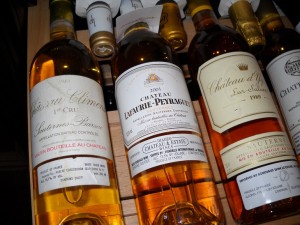
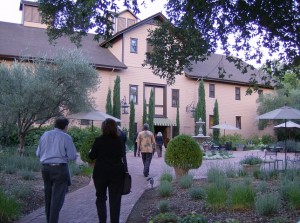
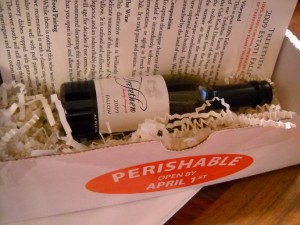
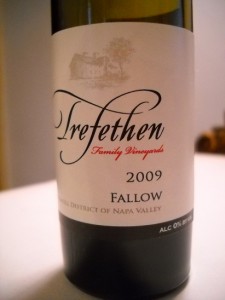
![PinotGrigioCR_07_FL[1]](http://itsawinederfullife.com/wp-content/uploads/2010/03/PinotGrigioCR_07_FL1-129x300.jpg)


